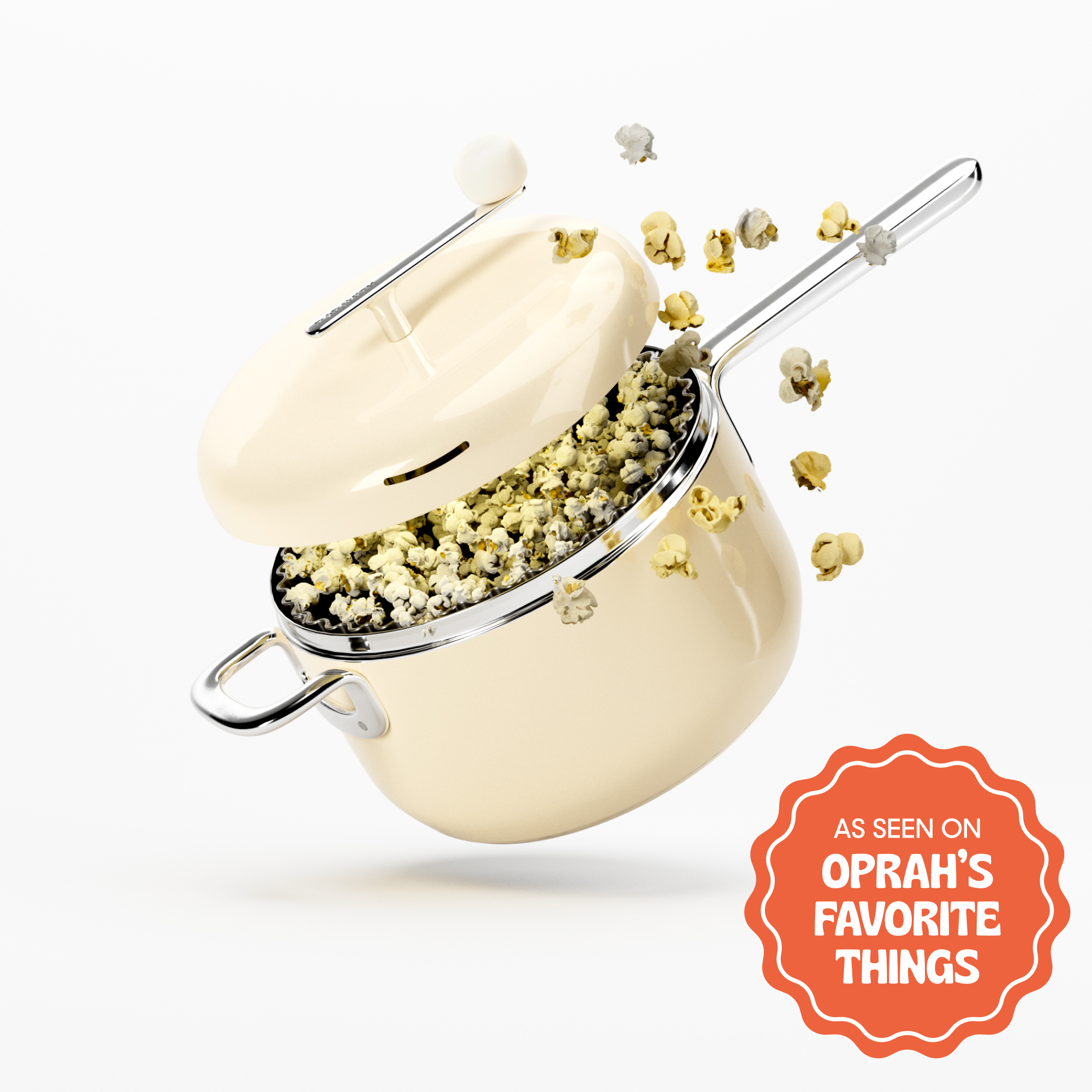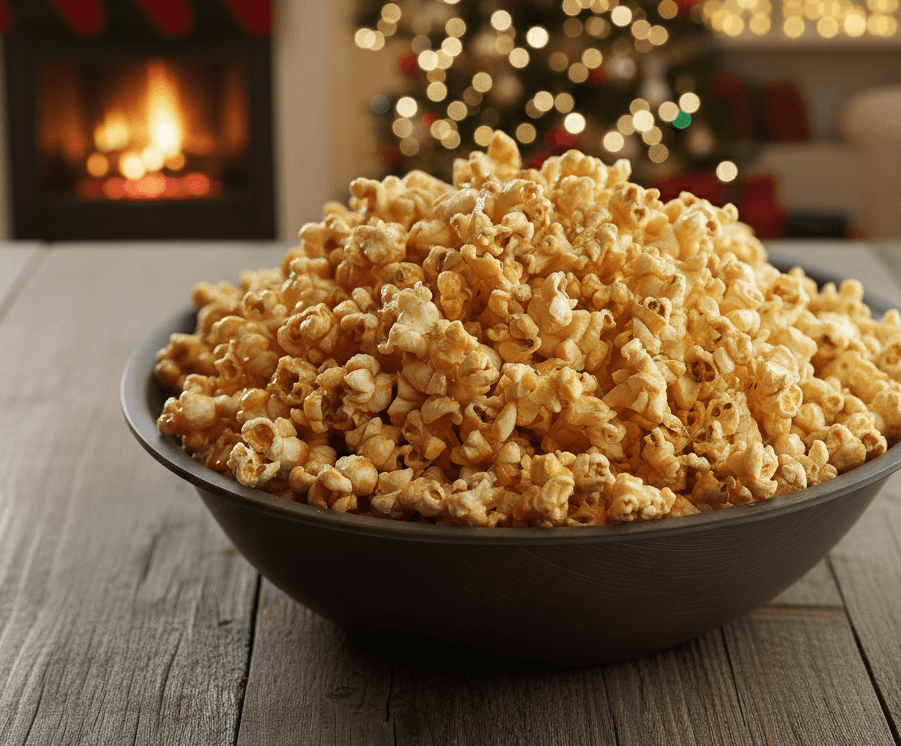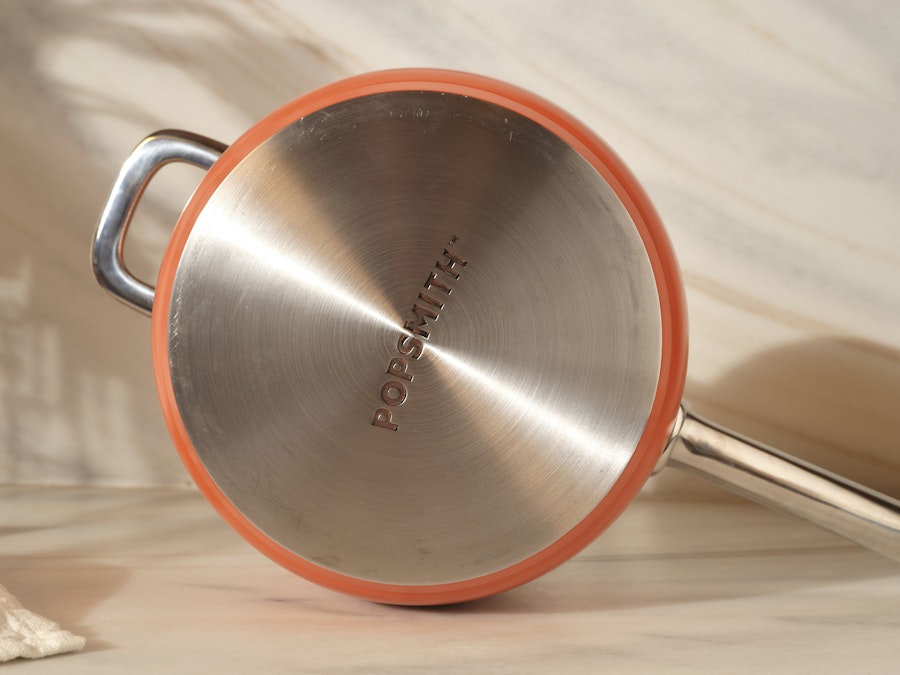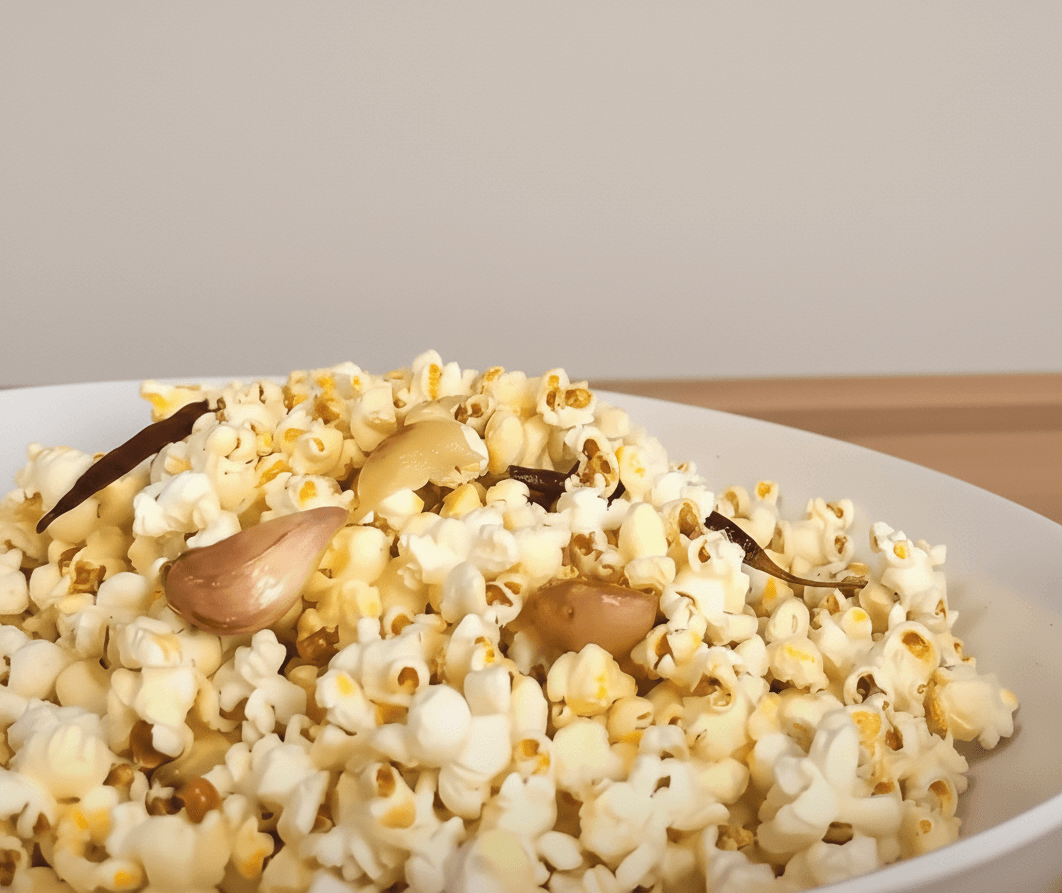Ever wonder why movie theater popcorn tastes different from what you make at home? Or why some kernels pop into fluffy clouds while others are smaller? The secret is in the popcorn you're using.
From the kernel variety to the shape it pops into, understanding the different types of popcorn can completely transform your snack.
In this guide, we break down everything you need to know about popcorn varieties — from kernel colors to shapes — so you can make a perfect batch every time with your trusty Popper.
Why Popcorn Type Matters
The type of popcorn you pick can affect the following factors:
- Texture: Some varieties pop fluffier, others crunchier.
- Flavoring: Different kernels have distinct taste profiles — some are sweeter, others are nuttier.
- Coating ability: Certain types are better for heavier seasonings and sauces than others.
Knowing these differences helps you choose the right kernel for your recipe. If you're making caramel corn, pick mushroom popcorn. Craving buttery movie theater-style popcorn? Butterfly is the way to go.
What Are the Most Common Types of Popcorn Kernels?
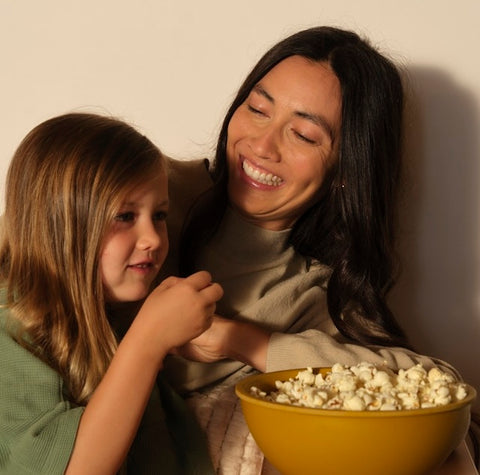
You've seen a bunch of kernels lining the shelves of your local grocery store — most the standard yellow; some an eye-catching blue.
Let’s take a look at the seven most common types and what sets each apart from the other. We also discuss what each type of popcorn is best for, so you can choose the right kernels for your popcorn bar or weekly movie night.
Yellow Popcorn

Yellow popping corn is what you'll find in most movie theaters. These kernels are medium-sized with a distinctive golden hue that comes from higher carotenoid content and are perfect for buttery popcorn or as a base for spicy popcorn seasonings.
Flavor Profile
Classic, slightly nutty popcorn with a hint of sweetness. The flavor is robust enough to stand alone with just butter and salt, but it's also versatile enough for any seasoning.
Texture
Yellow kernels pop into large, irregularly-shaped butterfly kernels with a tender-crisp texture.
White Popcorn
Popping to only 40 times their original size, white kernels are slightly smaller than yellow popcorn and have a pearl-like appearance.
Flavor Profile
White popcorn is subtle and sweet, with less of the corn-y taste yellow popcorn has. It's great for recipes where you want other flavors to be the star.
Texture
It's softer and more tender than yellow popcorn, with thinner hulls — you'll notice fewer pieces stuck in between your teeth.
Blue Popcorn
Blue popcorn is a special type of popcorn that's gaining popularity among popcorn connoisseurs. The kernels have a striking blue-purple color thanks to its high anthocyanin content — the same antioxidant that's in blueberries.
It's less common than yellow and white varieties, but specialty food stores and online retailers carry it.
Flavor Profile
Blue popcorn is noticeably nuttier than other types of popcorn, with a little sweet undertone.
Texture
Despite the blue color of the kernels, it pops white with a crunchier and a slightly denser texture than yellow popcorn.
Red Popcorn
Red popcorn kernels have a distinctive burgundy color. Like blue popcorn, the color comes from high antioxidant content, though red kernels give you different beneficial compounds.
Flavor Profile
This popcorn variety has a rich, nutty flavor with subtle sweet notes and a hint of earthiness. Many say it has a more whole grain taste versus other types of popcorn.
Texture
Red kernels pop into smaller popcorn that's denser than yellow popcorn. The hull is also a little thicker, which gives it that satisfying crunch.
Popcorn Kernel Shapes
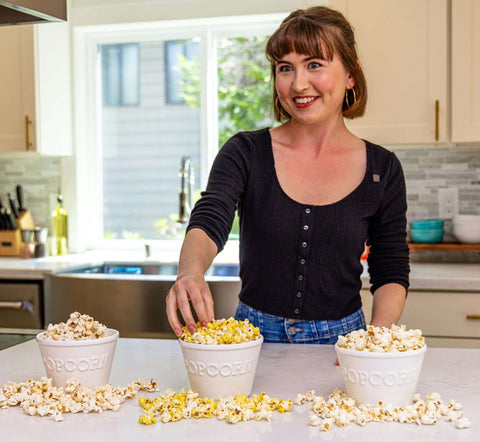
Popcorn doesn’t only come in a wide variety of colors and sizes. It also has different shapes — butterfly and mushroom.
Popcorn shape isn’t exclusive to one type of popcorn. One kind of kernel can pop into two different shapes. However, the shape can affect the texture and taste of your popcorn kernels.
Butterfly Popcorn
The shape of popcorn you typically see in movie theater popcorn or microwave popcorn bags is the butterfly kind. It has an irregular shape and tends to be softer and fluffier than mushroom popcorn. It's also known as snowflake popcorn, which is the perfect name for it because no two pieces of this popcorn look the same.
Butterfly-shaped popcorn breaks easily but its light, crispy texture is part of the appeal. You’ll love using it for butter-flavored popcorn.
Mushroom Popcorn
Mushroom popcorn is big, round, and puffy. It looks like a round mushroom with small speckles. Mushroom-shaped popcorn is stronger and sturdier than butterfly popcorn. As a result, it’s normally used to make sweet popcorn.
Mushroom popcorn is great for recreating gourmet popcorn flavors at home. You can experiment with chocolate and marshmallows, or try your hand at caramel corn. The big, round shape is perfect for holding heavier toppings.
What Type of Corn Is Popcorn Made From?
Many people think popcorn can be made from any type of corn, but this isn't the case.
The sweet corn you see in the produce section and the field corn used for livestock will not pop under pressure. What makes popcorn pop is its hard outer shell and the high amount of moisture inside the kernel — only a few types of corn really have the perfect setup to turn into popcorn.
Popcorn kernels are made from a type of corn called flint corn. Flint popcorn is typically found in the Midwest. It comes in a variety of colors, and each type of popcorn you see in the grocery aisle is from a different variety of flint corn.
Related: Popcorn vs. Field Corn: What Is the Difference Between the Two?
Hulless vs. Hulled Popcorn: Which Is Better for You?
The hull of a popcorn kernel is the crunchy piece inside the popped kernel. It’s the part that gets stuck in your teeth. Some people think the hull is unhealthy, but it actually has lots of disease-fighting antioxidants. It’s an important part of the popcorn kernel.
The hull can also never be completely removed or absent from the kernel. Completely hulless popcorn doesn’t exist, just kernels with smaller hulls.
No matter what kind of popcorn kernels you buy, don’t worry about them being unhealthy. Plain popcorn is a whole grain and makes a healthy snack. Melted butter, sugar, salt, and similar seasonings are what give it more calories. But since you’re not going to eat that all the time, there’s nothing wrong with indulging.
Related: Hulless Popcorn: What Is It & Is It Better Than Regular Popcorn?
More Snacking Inspiration for Popcorn Lovers![Hand grabbing popcorn from a bowl next to a blue popper [42324529479873]](https://cdn.shopify.com/s/files/1/0610/5792/5313/files/cobaltpopper_a7e037d5-caad-426c-a3d9-aae1d21a6686_480x480.png?v=1707258980)
Now that you understand the various types of popcorn, you can choose the right kind for any recipe. Start with yellow and white for everyday snacking, and then explore blue and red kernels when you're feeling more adventurous.
Whatever you choose, your Popper works great with every kind of kernel, delivering consistent results with its even heat distribution and patented spinning mechanism.
Ready to put your popcorn knowledge to work? Try our popcorn recipes now!
FAQs About the Different Types of Popcorn
What are the different types of popcorn?
You can categorize popcorn according to color and shape.
By kernel color, the main types include yellow popcorn, white popcorn, blue popcorn, and red popcorn.
By popped shape, there are two primary types — butterfly and mushroom. Butterfly popcorn has irregular, fluffy shapes with "wings" that break off easily. Mushroom popcorn, on the other hand, has a round, compact shape that resists breaking, which makes it ideal for candy coating and caramel corn.
Is yellow or white popcorn healthier?
These two types of popcorn are nearly identical from a nutritional standpoint. Yellow kernels have slightly more antioxidants compared to white kernels, but they both contain 30 calories per cup when air-popped. They also provide the same amount of protein and fiber per cup. The real health difference boils down to your popping method or what oil you use.



